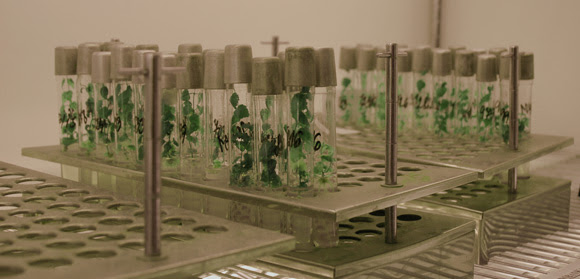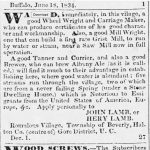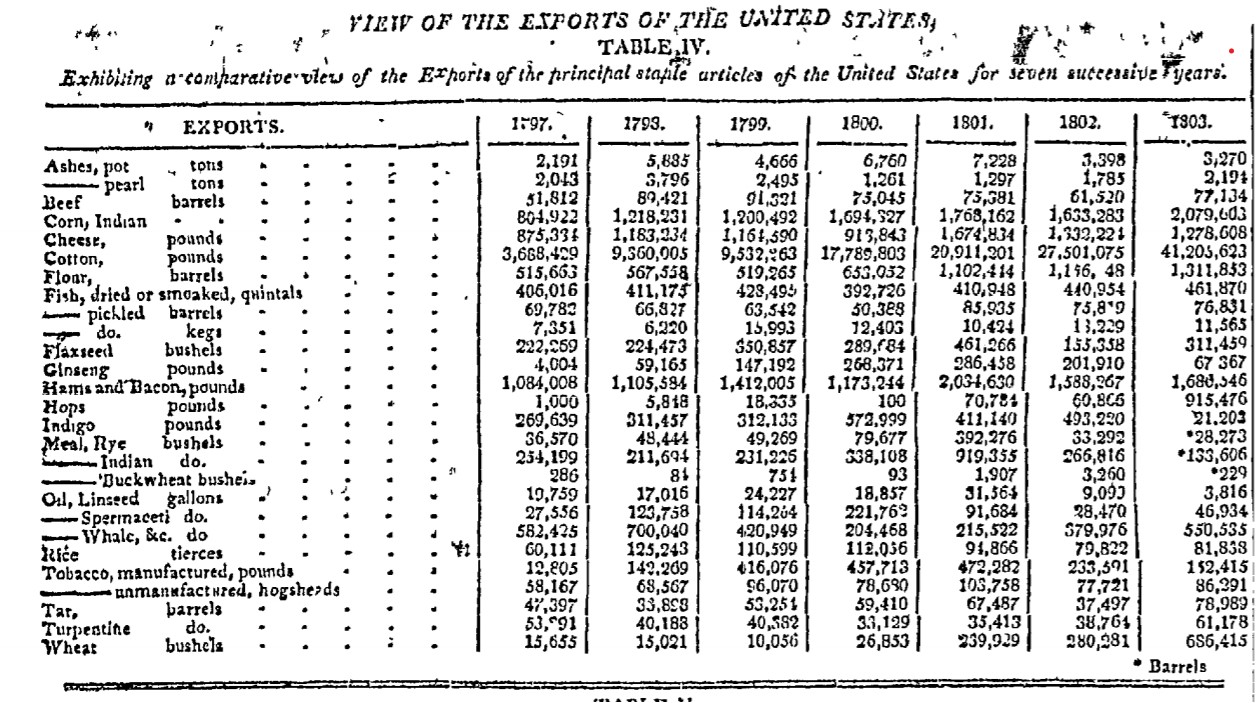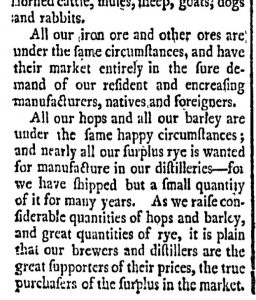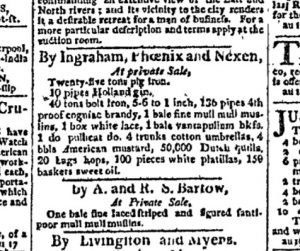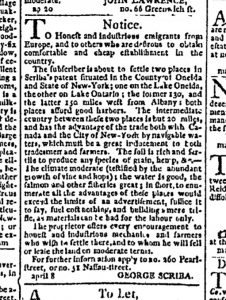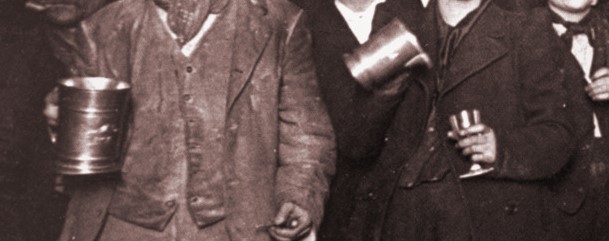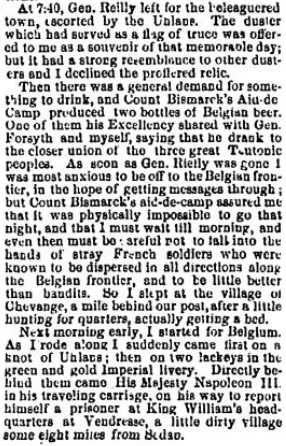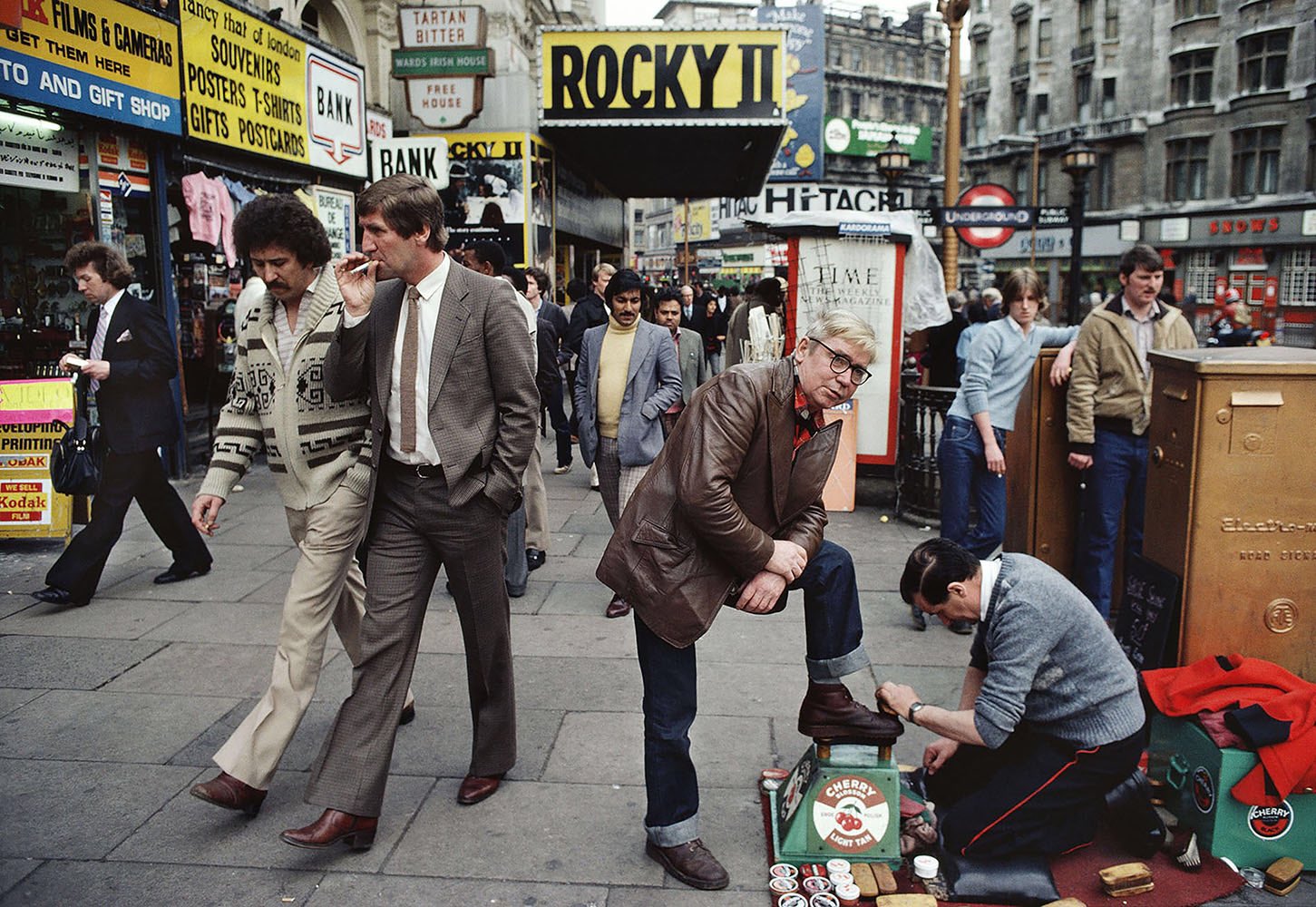 The last of birthdays, anniversaries and public holidays over the last four weeks has finally passed. And it has snowed. Wednesday was as sharp as deepest January at -16C even if it was +8C last Saturday. Five weeks before the solstice. So, I am buried in wool blankets at home this week, covered as soon as I get through the door, hugging the wood burning internet server looking for answers. Which is where I found the image above, from 1979 when Rocky II came out. It’s from Piccadilly Square in London. Notice the sign for Wards Irish House, mentioned by Boak and Bailey in 2014. Another report, two years later describes the entertainments:
The last of birthdays, anniversaries and public holidays over the last four weeks has finally passed. And it has snowed. Wednesday was as sharp as deepest January at -16C even if it was +8C last Saturday. Five weeks before the solstice. So, I am buried in wool blankets at home this week, covered as soon as I get through the door, hugging the wood burning internet server looking for answers. Which is where I found the image above, from 1979 when Rocky II came out. It’s from Piccadilly Square in London. Notice the sign for Wards Irish House, mentioned by Boak and Bailey in 2014. Another report, two years later describes the entertainments:
Wards Irish House. Used to drink there in the ’70’s. Great Guiness with shamrock carved in the head. Once watched a group of people torturing a rat to death on their table top. Great seedy memories!
Conversely, Retired Martin has had a happier experience in his unending pub travels, especially with his visit to The Old Ship Inn in Perth, Scotland which he has shared in a lovely photo essay:
“How are ya ?” says the lovely Landlady. “Thirsty I bet“. Little things make a pub. It was Jarl, of course, a cool, foamy gem of a beer…
 Perhaps somewhere in the middle, Boris Johnson has apparently failed to keep his word, this time related to staying out of the pub until Brexit is sorted:
Perhaps somewhere in the middle, Boris Johnson has apparently failed to keep his word, this time related to staying out of the pub until Brexit is sorted:
…the prime minister had claimed he would not drink until Brexit is sorted – with the first phase of the UK’s withdrawal set for January 31. But he failed to show restraint and maintain his “do or dry” pledge after pulling a pint in a Wolverhampton pub… Asked if he would taste the beer, he replied: “I’m not allowed to drink until Brexit is done.” He added “I’ll whet my whistle” before indulging in a sip.
Beth Demmon also told a tale this week – but one with more integrity – about Michelle McGrath, executive director of the United States Association of Cider Makers:
…she hobnobbed with agricultural producers, including a small cluster of organic orchardists operating in the mineral-rich Columbia River Gorge in the rural north of Oregon. They were looking for ways to diversify their income streams, and cider was “just taking off,” according to McGrath. This was the future, she realized. “I just happened to be in the right place at the right time and have the right passion.”
Speaking of the right place at the right time and have the right passion, the rumours are true! Prague: A Pisshead’s Pub Guide – 3rd Edition is being written! And if you give to Max he might stop hitting me up for spare cash.
The Simpsons on beer and also on beer.
There has been a small somewhat odd protest in England related to Paul:
…bring back Paul! Paul worked at #Beavertown Brewery until he was sacked without reason and without warning. Paul is a well-respected member of staff who always supported his workmates! Reinstate Paul!
Katie is on the case, as usual. She has asked if anyone at all can tell her more about the sacking of a team member named Paul Shaw. Oddly, no deets yet.
In perhaps bigger news, Josh Noel gave the heads up on the swallowing up of the Craft Brew Alliance by Anheuser-Busch. AB now acquires full control of craft brands like Kona, Redhook, Widmer, Omission, Square Mile Cider, Wynwood, Cisco, Appalachian Mountain – making it the largest craft beer company in the United States. Nutty. Diana Barr in the Puget Sound Business Journal explained how this is the end of a process that started some time ago:
Anheuser-Busch InBev owns 31.2 percent of Craft Brew Alliance and agreed to pay $16.50 per share in cash for the remaining shares, the companies said Monday. The deal — which Reuters valued at $321 million — is slated to close next year, pending approval by regulators and a majority of CBA shareholders not affiliated with A-B, officials said. Most of CBA’s brands… already are distributed through A-B’s independent wholesaler network.
MarketWatch argued that what looked like a premium price might actually have been a bit of a steal given recent stock price fluctuation. Jeff provides a brief boatload of background:
Originally called Craft Brands Alliance, it began in 2008 as a loose partnership with Seattle’s Redhook, which like Widmer had sold a minority stake to Anheuser-Busch, to combine sales and marketing operations. In 2008, it became a single company (called Craft Brewers Alliance) headquartered in Portland. The two companies were of a similar size at that point, but Widmer Brothers soon eclipsed Redhook. CBA had been contract-brewing Kona beer for the mainland since 2001. In 2010 the company acquired Kona outright. It owned a portion of Goose Island and sold it to ABI in 2011. In 2012 it launched a gluten-free brand and in 2013 a cider brand. More recently it began acquiring smaller breweries.
Perhaps as an antidote, a tale of restoration in the form of one last post on a pub in England – and a splendid one from Boak and Bailey who recently revisited The Fellowship Inn at Bellingham, south east London:
It was designed in glorious mock-Tudor style by Barclay Perkins’ in-house architect F.G.Newnham. On the opening day in 1924, Barclay Perkins reported that over a thousand meals were served. Again, check 20th Century Pub for more contemporary accounts of the life and colour of this and other big interwar estate pubs. When we visited in 2016, a small part of the pub was still trading, though most of it was empty and and terrible disrepair…
In happy news, the British Guild of Beer Writers:
…has shortlisted 28 writers, journalists and bloggers in its Annual Awards. The winners in 11 categories as well as the overall Beer Writer of the Year and Brewer of the Year will be unveiled at the Guild’s Annual Awards presentation and dinner on 3 December. Judges read, viewed and listened to some 150 entries which included books, newspaper and magazine articles, both printed and online, as well as blogs, radio broadcasts, films and podcasts.
I was unaware of the three nominees for Guild Award for Best Citizen Beer Communicator but see one writes mainly in Russian and another has a very shouty vid channel. Hmm… are they EU or just British citizens? Frankly, I find the total entry pools of 150 a bit sad comment but there we are. While someone will send out the attack dogs for merely mentioning, as both the BGBW and the NAGBW have placed themselves into the fairly generic good newsy trade journalesqueism niche – aka “beer and brewing industry coverage” – pretty squarely with this years award structure it might be time for a broader garage band level revival of creative and consumer focused writing. But that’s me. Remembering.
Gary takes up the challenge in a pre-facto sort of way and wrote my kind of post – history, beer and law from 1887:
Here’s what happened. A public house in Brick Lane, London was shown to have mixed two beers. One from Barclay’s was – my calculation from gravity numbers in the case – 5.7% abv, the other, a “small beer” from a dealer, only 2.4% abv… The mixing statute prohibited adulterating or diluting “beer” or adding anything to it except finings. The key issue was, did Crofts dilute beer by mixing a weaker beer with a stronger? The magistrate held yes; the appeal judges agreed, although not without some difficulty in the case of one judge.
It’s a start.
UPDATE #1: want a model of how to write about a business from a impassioned consumer’s perspective, look no further than these HATS IN CHIGAGO!!
UPDATE #2: I’ve discovered a new interest: alt forms of beer competition. This week – the curling bonspiel model:
Judging reform: (1) entries only nominated by others, (2) judging by panels with multiple tastings over time, (3) regional play downs leading to multiple progressive winnowing, (4) independent accredited controls. Allows more participation without one shot beers no one can buy.
There… enough for now. I have to go hibernate, to sob quietly for the summer of 2019 that I could pretend was just, you know, taking a break… until now. For further beery links, check out the Boak and Bailey news update on Saturday and then tune your dial to the OCBG Podcast on Tuesdays. And look to see if there was a mid-week post of notes from The Fizz as well.


